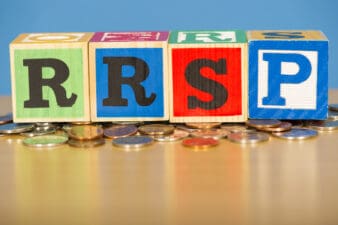In 2022, interest rates are rising, and Bitcoin (CRYPTO:BTC) is falling. For the year, BTC had fallen 36% as of this writing — its worst start to a year since 2018. That year, Bitcoin’s price ultimately ended up falling 80% before bottoming out. This year, we may expect more of the same. In 2018, central banks were aggressively raising interest rates, and they’re doing the same thing today. In fact, the rate hikes occurring this year are much more aggressive than those observed in 2018. That year, the Fed hiked by 25 basis points four times. This year, the hikes are 50 basis points, and more of them are planned.
It’s pretty clear that Bitcoin is inversely correlated with interest rates. When rates go up, BTC goes down. In this article I will explore the possibility that these aggressive rate hikes could take Bitcoin to $0 — or, perhaps more realistically, to new lows for the year.
Why high interest rates are bad for crypto
High interest rates are bad for crypto because they make risky assets less necessary. Federal Reserve policy influences the interest rates available on treasury bills, savings accounts, and other such safe assets. The higher these rates go, the more return is available “risk free.” If interest rates go higher than the inflation rate, then it becomes possible to generate positive real returns risk-free. In such an environment, it makes little sense to assume risk.
Cryptocurrencies, including Bitcoin, are very risky assets. Their volatility is higher than that of stocks, and the potential for permanent loss of capital is real. It makes sense, then, that their prices would go down when interest rates go up. Much like technology stocks, they represent a risk/return tradeoff, and such tradeoffs become less desirable when interest rates rise.
Is $0 a realistic possibility?
It appears likely that Bitcoin will continue going down in price this year. Both the Federal Reserve and the Bank of Canada have more interest rate hikes coming, so if the inverse correlation holds, then BTC should decline in price.
How far Bitcoin has to fall is anybody’s guess. In 2018, when the Federal Reserve hiked rates by 25 basis points four times, it fell 80% top to bottom. That might indicate that we have even further to go this time around, but the matter isn’t quite so simple. In 2018, Bitcoin reached a high just before the start of the year. This time around, it is in the midst of a longer downtrend going back to November 2021. So, the losses for the year may not be as severe this time.
An interesting hypothetical we could explore is whether there is an interest rate that would take Bitcoin to $0. If investors buy risk assets for superior returns, then treasury yields of 20%, 30%, or higher should theoretically take a staggering bite out of them. Why bother with risk assets at all if there’s 30% up for grabs risk free?
It’s tempting to think that such a staggeringly high interest rate could take BTC to $0. However, there are two problems with the thesis:
- Bitcoin’s use case: Bitcoin is very useful as a currency in black/grey markets, and its role in this regard isn’t easily replicated by banks. There will probably always be some demand for Bitcoin due to its secrecy, so while a steep crash is possible, $0 is unlikely. Some demand will probably always be there.
- Bitcoin is very popular with tech hobbyists. There are many people in the tech scene who hold Bitcoin for ideological reasons, seeing it as the way of the future. These investors are less likely to be pushed out of their positions due to high interest rates compared to institutional asset managers. So, although high interest rates could inspire money managers to sell, they might not have the same effect on die-hard fans.
The points above put a damper on the notion that high interest rates could take Bitcoin to $0. Ultimately, people have reasons for holding BTC other than generating returns. However, there are enough speculators in the market that a big enough rate hike could move BTC’s price a lot.







